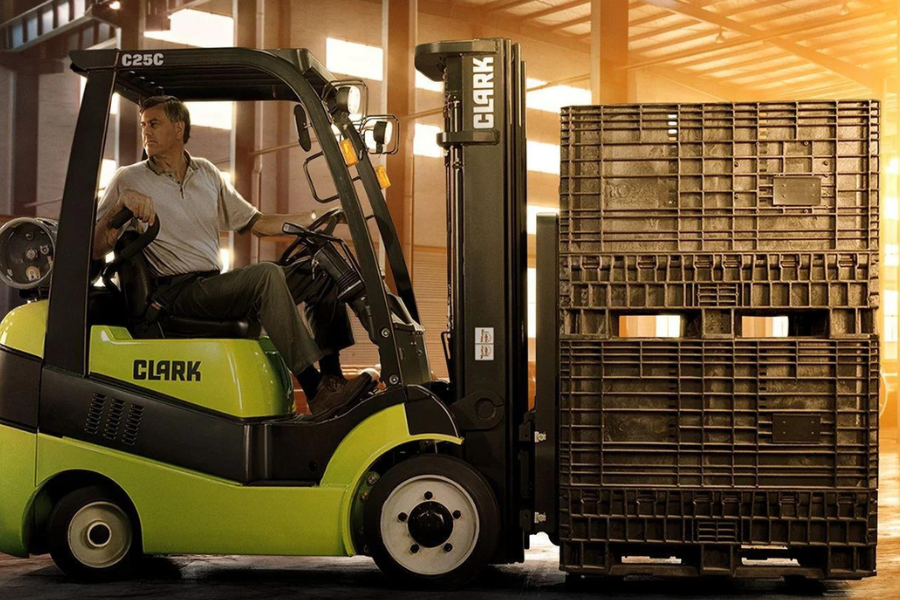HOW TO OPERATE A FORKLIFT STEP BY STEP

Operating a forklift demands a delicate balance of skill, precision, and safety awareness. Whether you're new to the forklift scene or seeking a refresher, understanding the step-by-step process from a trusted truck dealership is crucial for a smooth and secure operation. The eight-step process begins with pre-operational checks, emphasizing tire inflation, fluid levels, and safety feature functionality. Safe maneuvering, proper parking, and shutting down procedures are outlined to ensure secure operations. Additional safety measures, such as wearing personal protective equipment and maintaining awareness, need to be kept in consideration when it comes to operating a forklift. In this blog, we will walk you through each stage, empowering you to operate a forklift efficiently and safely.
7 Steps To Operate A Forklift From A Trusted Truck Dealership
Step 1: Pre-Operational Checks
Before diving into operation, perform thorough pre-operational checks to ensure the forklift is in optimal condition. Operators should inspect their forklift by examining tires for proper inflation, checking fluid levels (brake fluid, hydraulic fluid), and confirming that safety features like lights and alarms are functioning. Additionally, inspect forks for any damage. Follow the pre-operational checklist provided in the forklift's operator manual, addressing any issues before proceeding. Furthermore, you can consult a trusted truck dealership in Tuscaloosa for more helpful information
Step 2: Mounting and Starting the Forklift
Approach the forklift from its left side and mount it carefully. Securely fasten your seatbelt before starting the engine. Engage the parking brake, confirm all controls are in the neutral position, and initiate the engine startup following the manufacturer's guidelines. Allow the engine to warm up adequately before moving forward.
Step 3: Familiarizing with Controls
Take a moment to acquaint yourself with the forklift's controls. Understand the dashboard layout and locate the steering wheel, accelerator, brake pedals, and lifting controls. Clear visibility and ease of access to these controls are crucial for smooth operation.
Step 4: Lifting and Lowering Loads
When lifting or lowering loads, position the forks accurately beneath the pallet or material. Tilt the mast slightly backward before lifting it to ensure stability. Use the lifting controls gradually to avoid sudden movements. When lowering a load, tilt the mast slightly forward for controlled descent.
Step 5: Maneuvering the Forklift
Practice safe maneuvering by adhering to speed limits, especially during turns or when navigating tight spaces. Utilize the horn to alert others in the vicinity and maintain a clear view of the path ahead. Avoid abrupt stops or sharp turns to prevent accidents or load instability.
Step 6: Parking and Shutting Down
Select a designated parking area away from traffic and pedestrian pathways. Lower the forks to the ground, engage the parking brake, and shift controls to the neutral position. Power down the engine as per the manufacturer's guidelines and remove the key. This ensures the forklift is securely parked and ready for the next operation.
Step 7: Additional Safety Measures
Step 8: Ongoing Training and Certification
Continuous learning is key for forklift operators. Regular training and certification programs keep operators updated on safety protocols and operational best practices. Staying informed about any changes in equipment or workplace conditions ensures a proactive and safe approach to forklift operation in Tuscaloosa, Alabama.
Final Thoughts
All in all, mastering the operation of a forklift is a skill that combines technical expertise with an unwavering commitment to safety. Following these step-by-step guidelines equips operators with the knowledge needed to navigate forklifts efficiently and securely. Whether you're a seasoned forklift operator or just starting out, embracing continuous learning and prioritizing best practices are fundamental to becoming a proficient forklift operator. So, if you’re looking for a trusted truck dealership in Tuscaloosa, Alabama, consider none other than a leading used commercial truck dealer, Bobby Park.
FAQS
Are there specific guidelines for lifting and stacking loads with a forklift?
Yes, proper load handling is crucial. Operators should position the forks correctly, tilt the mast back slightly, and avoid overloading. Training programs provide hands-on guidance for these tasks.
What safety measures should forklift operators follow during operation?
Safety measures include wearing seatbelts, obeying speed limits, keeping a clear view of the path, and using the horn when necessary. Following used commercial truck dealer guidelines and attending training courses can enhance safety.
How often should forklift operators refresh their training on proper operation?
Regular refresher training is recommended, especially if there are changes in workplace conditions, new equipment, or if an operator is observed operating the forklift unsafely. Continuous training ensures ongoing competency and adherence to best practices.
WHY CHOOSE US?
- Full Parts and Service Shop
- State of the Art Paint Shop
- Body Work
- Van bodies, reefer bodies, Flatbed bodies and Storage Containers available
- Tuscaloosa and Jackson Locations
- Ships anywhere in the United States

